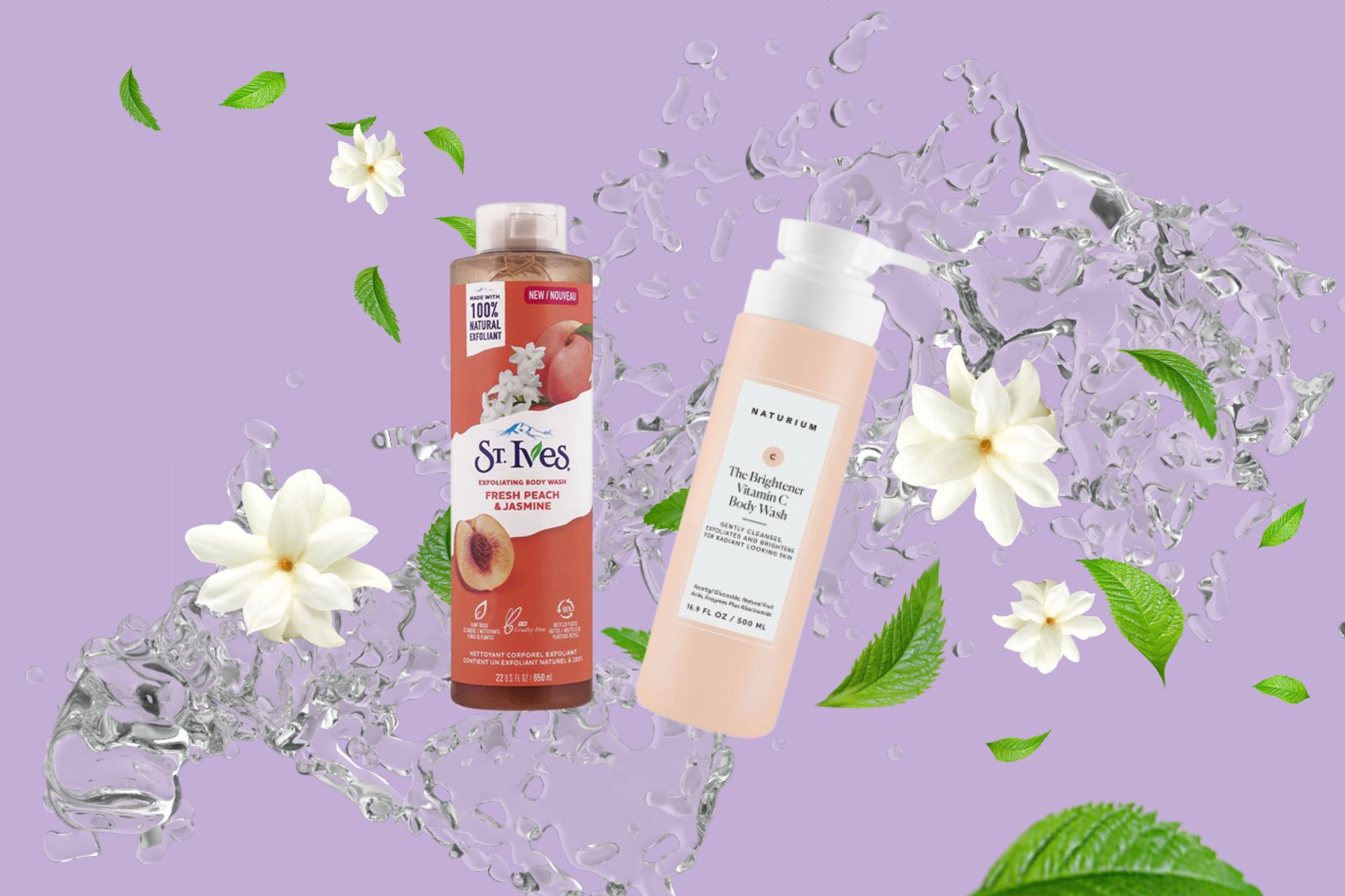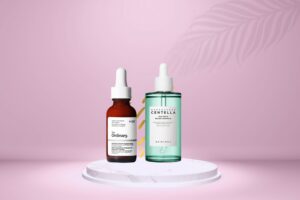Understanding Your Skin pH: Why It Matters for Product Selection
Your skin has a pH level. And that number can make or break your entire skincare routine.
I learned this the hard way. For months, I couldn’t figure out why my expensive cleanser left my face tight and red. Why my serums stung when I applied them. Why my skin felt worse after using “gentle” products.
The answer was pH. My cleanser had a pH of 9 (way too high), and it was messing up my skin’s natural balance. Once I switched to pH-balanced products, everything changed. My skin stopped feeling irritated. Products worked better. My routine finally made sense.
If you’ve ever wondered why some products make your skin angry while others feel amazing, pH might be the missing piece of your skincare puzzle.
What Is Skin pH and Why Should You Care?
pH stands for “potential of hydrogen.” It measures how acidic or basic something is on a scale from 0 to 14.
- 0-6.9 = Acidic
- 7 = Neutral (like pure water)
- 7.1-14 = Basic (or alkaline)
Your skin naturally sits at about 5.5 pH. That’s mildly acidic. This acidic environment is called your “acid mantle,” and it’s one of your skin’s most important defenses.
Think of your acid mantle like a bouncer at a club. It keeps the bad stuff out (harmful bacteria, pollution) and helps the good stuff work better (your skincare products, natural oils).
Research published in the International Journal of Cosmetic Science shows that healthy skin pH ranges from 4.5 to 6.5. When your skin’s pH gets thrown off, problems start.
What Happens When Your Skin pH Goes Wrong
When your skin pH gets too high (too basic), your acid mantle breaks down. This leads to:
Immediate problems:
- Tight, dry feeling after cleansing
- Increased sensitivity to products
- Redness and irritation
- Products that sting when they shouldn’t
Long-term issues:
- More breakouts (bad bacteria can grow easier)
- Faster aging (less protection from damage)
- Chronic dryness or oiliness
- Skin conditions like eczema getting worse
I see this all the time with people who use traditional bar soaps on their face. Most bar soaps have a pH between 9-11. That’s way too high for your skin’s natural 5.5 pH level.
How to Tell if Your Products Are pH-Balanced
Most skincare brands don’t put pH levels on their labels. But there are ways to figure it out.
DIY pH Testing
You can buy pH strips online for about $10. Just dip a strip in your liquid products or rub it on cream products. Compare the color to the chart.
What to test:
- Cleansers (most important)
- Toners
- Serums
- Any leave-on treatments
Look for pH-Friendly Ingredients
Some ingredients naturally help maintain healthy skin pH:
Good for maintaining acid mantle:
- Lactic acid
- Glycolic acid
- Salicylic acid
- Vitamin C (L-ascorbic acid)
- Niacinamide
Red flags (often high pH):
- Sodium hydroxide (lye)
- Ammonium lauryl sulfate
- Traditional soap bases
- High levels of baking soda
The Products That Matter Most for pH
Not every product in your routine needs to be perfectly pH-balanced. But some are more important than others.
Cleansers: The Make-or-Break Product
Your cleanser has the biggest impact on your skin’s pH. Use a high-pH cleanser, and you’re starting your routine by damaging your acid mantle.
What to look for:
- pH between 4.5-6.5
- Labels that say “pH-balanced” or “low-pH”
- Gentle surfactants like coco-glucoside
Avoid:
- Bar soaps (unless specifically formulated for face)
- Cleansers that make your skin feel “squeaky clean”
- Products with high amounts of sodium lauryl sulfate
Toners: The pH Adjusters
A good toner can help bring your skin back to its ideal pH after cleansing. This is especially helpful if your cleanser is slightly high in pH.
pH-adjusting toners often contain:
- Fruit acids (AHAs)
- Salicylic acid (BHA)
- Botanical extracts with natural acids
Serums and Treatments: Context Matters
Some active ingredients work better at specific pH levels. Vitamin C serums often have a low pH (3-4) to stay stable and penetrate skin better.
This might sting at first if your skin isn’t used to it. But it’s normal and usually gets better as your skin adjusts.
Building a pH-Friendly Routine
Here’s how to structure your routine with pH in mind:
Morning Routine
- Low-pH cleanser (5.5 or lower)
- Wait 30 seconds for skin to return to natural pH
- Vitamin C serum (if using – pH 3-4)
- Wait 10 minutes for vitamin C to absorb
- Niacinamide or hydrating serum (pH 5-7)
- Moisturizer (pH 5-7)
- Sunscreen (pH varies, but apply last)
Evening Routine
- Oil cleanser (if wearing makeup/sunscreen)
- Low-pH cleanser
- Wait 30 seconds
- AHA or BHA treatment (pH 3-4) – 2-3 times per week
- Wait 20 minutes for acids to work
- Hydrating serum or treatment
- Moisturizer or face oil
Product Recommendations by pH Level
Low-pH Cleansers (4.5-6.5):
- CeraVe Foaming Facial Cleanser (pH ~5.5)
- Neutrogena Ultra Gentle Daily Cleanser (pH ~6)
- The INKEY List Salicylic Acid Cleanser (pH ~5)
pH-Balancing Toners:
- Paula’s Choice CALM Restoring Toner (pH ~6)
- Thayers Witch Hazel Toner (pH ~5-6)
- The Ordinary Glycolic Acid 7% Toning Solution (pH ~3.6)
Well-Formulated Serums:
- The Ordinary Niacinamide 10% + Zinc 1% (pH ~6)
- Mad Hippie Vitamin C Serum (pH ~4)
- Paula’s Choice 2% BHA Liquid Exfoliant (pH ~3.2-3.7)
Common pH Mistakes That Ruin Your Routine
Mistake #1: Using high-pH cleansers That “deep clean” feeling? It’s actually your acid mantle being stripped away.
Mistake #2: Not waiting between pH-dependent steps If you apply a high-pH product right after a low-pH one, you neutralize the effects of both.
Mistake #3: Mixing acids with high-pH products Your expensive vitamin C serum won’t work if you apply it right after a high-pH toner.
Mistake #4: Overusing low-pH products Yes, you can have too much of a good thing. Using multiple strong acids can over-exfoliate your skin.
Signs Your pH Balance Is Off
Too acidic (rare, but possible):
- Persistent stinging from gentle products
- Increased sensitivity to everything
- Skin that looks red and inflamed
Too basic (more common):
- Tight feeling after cleansing
- Increased breakouts
- Products that used to work suddenly irritate
- Dull, rough skin texture
How Long Does It Take to Fix pH Issues?
Your skin’s pH can normalize pretty quickly once you switch products. Within a few days to a week, you should notice:
- Less tightness after cleansing
- Products absorbing better
- Less stinging from gentle products
For long-term acid mantle repair, give it 4-6 weeks of consistent pH-balanced routine.
pH and Different Skin Types
Oily skin: Often has a slightly higher pH (around 6). Low-pH cleansers help control oil production and prevent breakouts.
Dry skin: Usually has a lower pH but damaged acid mantle. Focus on gentle, pH-balanced products that repair the barrier.
Sensitive skin: Very reactive to pH changes. Stick to products between 5-6 pH to avoid irritation.
Aging skin: pH tends to increase with age, making the skin more vulnerable. Low-pH products can help maintain protection.
The Bottom Line: Small Changes, Big Results
You don’t need to overhaul your entire routine overnight. Start with these simple swaps:
- Switch to a low-pH cleanser – This gives you the biggest impact
- Check your toner’s pH – Make sure it’s not undoing your cleanser’s work
- Time your acids properly – Give low-pH products time to work
- Listen to your skin – Healthy skin shouldn’t feel tight or irritated
Understanding pH isn’t about becoming a chemistry expert. It’s about working with your skin’s natural systems instead of against them.
Once you get the pH piece right, you’ll probably find that all your other products work better too. Your skin will be happier, your routine more effective, and you’ll finally understand why that expensive serum actually does what it promises.
The best part? Most pH-friendly swaps don’t cost more than what you’re already using. You’re just choosing smarter, not spending more.



